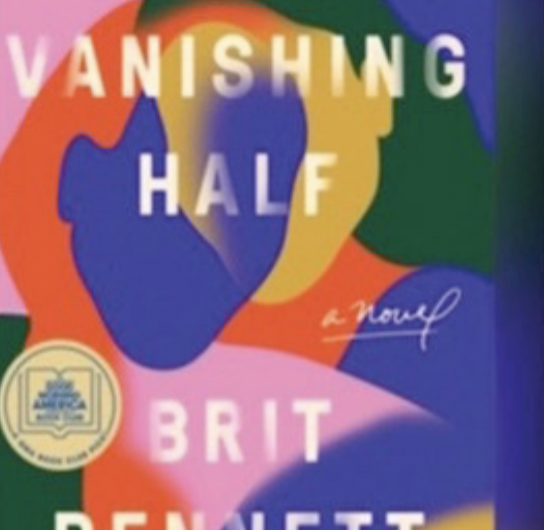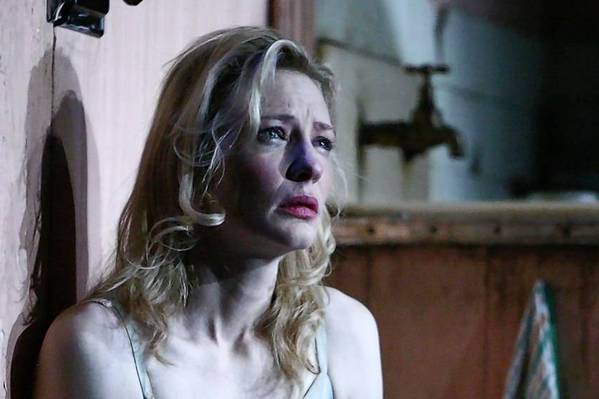Words by Saskia May, Books Editor
TW: Racism and violence
The New York Times #1 bestseller, The Vanishing Half (2020), is a story with a nonlinear narrative that traverses decades, from the 1940s to the 1990s. The novel begins with the reappearance of one of the identical Vignes twins to the fictional town of Mallard in Louisiana, known for its residents of colour who have pale complexions and an ‘obsession with lightness’. Traumatised by the murder of their father by racist thugs, ‘trapped by [Mallard’s] smallness’, the Vignes twins, Stella and Desiree, lead strikingly different lives, but, as Brit Bennett notes, ‘You can escape a town, but you cannot escape blood’.
Desiree, who ran away when she was sixteen with her twin Stella, returns to Mallard with her child Jude, who faces ‘crude whispers’ for she has a dark complexion. The townspeople call her ‘Tarbaby’ and ‘Midnight’ and Jude battles racism all her school years, for colourism runs deep in Mallard. The community are troubled by Jude, for ‘they weren’t used to having such a dark child around them and were surprised at how much it upset them’. For the Mallard townspeople, they feel that they must maintain their pale complexions, ensuring that “the darkest ones [are] no swarthier than a Greek”. Despite the colourist and hostile community, Bennett depicts Desiree’s feelings of tender pride and maternal joy for her daughter Jude, ‘tying pink ribbons around Jude’s braids. Bright colours looked vulgar against dark skin, everyone said, but she refused to hide her daughter in drab greens or grays’.
Unlike her twin sister, Stella Vignes does not return to Mallard, leading a very different life, one of luxury. The story reveals that Stella, after leaving Desiree with no warning, has decided in New Orleans, to ‘split in two’ and ‘pass as white’, marrying a wealthy white man, whom she moves to Los Angeles with, cutting off all connections to her past. The acclaimed and canonical Tennessee William’s A Streetcar Named Desire (1947) captures the poverty and desperation of the city of New Orleans, which is where Bennett places the twins in the 1950s once they have first run away. Struggling to pay the rent where they work as laundry staff, Stella decides to ‘pass as white’, hoping for safety and opportunity, and working in an office for her boss Blake Sanders, who later becomes her husband. For Stella, and the dissonance between her true self and projected self, ‘whiteness’ has a potency that she despises, for it will protect those held within, but has the potential to destroy all those who do not possess such whiteness.
In Black history month, this is an important read, for this novel is fraught with the painful, traumatising effects of racism and colourism, but also of separation, of heart ache, and of longing. Bennett’s gift is for prose that is observant and vulnerable, her omniscient narration capturing a keen interest in the dichotomy between what it means to belong, and to be isolated. As Bennett notes, ‘there are many ways to be alienated from someone, few to actually belong’.
Once in Los Angeles, Stella goes to great pains to hide her family background, even telling her daughter that her ‘family is gone’. Bennet depicts the stifling, wealthy, and racist suburban community of Palace Estates, where Stella is petrified when an African American family move in next door, in case she may be ‘found out’. Despite her fears, Stella tentatively and secretly befriends her black neighbour Loretta, forging a close bond that reminds her of the one she used to share with her twin, Desiree, for ‘Loretta Walker had become the only person she could talk to’. After a Christmas Eve party where Stella cruelly snubs Loretta by not inviting her, despite becoming close with her, the Walker’s face racist and violent abuse, which mirrors the horrors Stella’s own father faced. Stella remains silent and complicit in the racism the Walkers endure and when Loretta and her family leave the neighbourhood for fear of their safety, Stella loses ‘her only friend in the world’.
Jude’s trajectory, as a college student in LA, places her in line with meeting her cousin Kennedy, the spoilt and entitled daughter of Stella and Blake. By chance, when a waitressing Jude sees Stella at a Beverly Hills retirement party she is attending and is shocked by how similar she looks to her mother Desiree, things begin to fall into place. Jude is fixated with having found Stella, who haunts her subconscious, drifting through her dreams. Musing over Stella’s decision, Jude remarks, ‘How could she leave the people who still longed for her, years later, and never even look back?’ Jude attempts to reveal the secrecy of the past to Kennedy, yet whilst they are cousins, the two young women could not be more different, ‘they both found each other’s lives inscrutable’. Bennett’s technical ability is expressed by her articulation of the parallels between characters who share experiences decades apart, for the struggles that Stella and Desiree face are also encountered by their daughters. Kennedy has been handed things on a silver plate, her mediocrity celebrated along with her pale skin and blonde hair, whereas Jude, a medical student, has had to always work hard, facing racism at every turn. When Kennedy notes that Jude has a lack of girlfriends, Jude touches on the insidious, pervasive effects of colourism she has dealt with, ‘It’s the place I come from. They don’t like people like me… Dark ones. Light ones are fine’.
The notion of true identity and of the fluidity of such identity, is returned to repeatedly by Bennett, with even the seemingly shallow Kennedy noting, ‘I love shopping… It’s like trying on all the other people you could be’. Kennedy mirrors what her mother Stella states decades earlier, ‘being anyone else was the thrill. To transform into a different person in plain sight’. When Jude is dissecting a heart and learning its names and structures, it occurs to her that ‘a body could be labelled but a person couldn’t’. The subject of transitioning and of the performative aspects of identity flow throughout The Vanishing Half. Desiree’s lover is an elusive bounty hunter, Jude is friends with a group of drag queens, and her partner Reese is a trans man. It is Bennett’s recognition of the nuance and complexity of life, when it comes to topics such as gender, sisterhood, sexuality, and love, is what makes this novel so engaging and poignant. To use a beautiful quote from Virginia Woolf’s To The Lighthouse (1927), ‘nothing was simply ever one thing’, and as Bennett notes, ‘nothing was as simple as you wanted it to be’. Paying homage to contrasting themes of change and transitioning, but also of permeance, of the long-lasting marks of racial trauma, Bennett ends her book with poetic metaphor and beautiful subtlety, ‘This river, like all rivers, remembered its course. They floated under the leafy canopy of trees, begging to forget’. This is a lyrical, humane, and complex story that will induce tears from its readers, leaving a lasting impression long after the last page has been turned.





